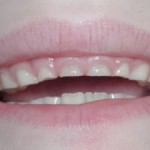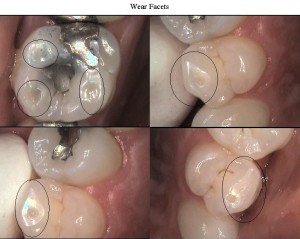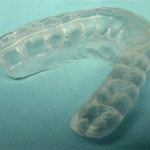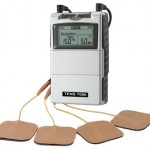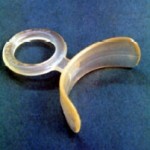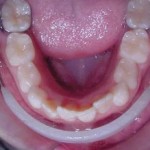4. Bruxism
It is a habitual grinding of teeth when the child is not chewing or swallowing. It is divided into Daytime Bruxism (Diurnal) or Night -time Bruxism (Nocturnal). Daytime Bruxism can be conscious or subsconscious grinding along with parafunctional habits and it is usually silent. On the other hand, Night-time Bruxism is categorized as subconscious grinding in a rhythmic pattern. Bruxism happens as a result of faulty fillings, improper teeth occlusion, genetic causes, neurological disturbances, occupational factors, over anxious or stressed children.
Â
What do you notice?
From the tooth surfaces, you will observe your child’s teeth are very much worn off. This feature is called atypical wear facet, whereby the worn area are shiny, uneven with sharp edges on the upper and lower front teeth. Fillings may fracture or tooth may chip off as a result of grinding. Teeth will become mobile and very sensitive to cold and hot food. Besides that, your child may complain of muscular tenderness and fatigue around the cheek on rising in the morning. Jaw movements restricted and difficult in opening mouth for a long time.
   Â
Management
First, we need to determine the underlying cause and eliminate it. Dentists will do necessary occlusal (tooth surface) adjustments such as coronoplasty and high points correction to bring the jaws to a normal relaxed state. They will also prescribe Occlusal Splints (or known as Night Guard) which is designed cover the teeth surfaces. These splints are very therapeutic because they ‘raise your bite’ so that the painful cheek muscles are not stretched. Next, dentists will restore severely grinded tooth which has exposed its roots with root canal treatment or crowning.
Â
Parents are advised to bring their children for psychotherapy sessions includes counseling, acupressure, relaxation exercises, hypnosis, behavior conditioning and biofeedback, to let the child releases his tension and increases his habit awareness so that he can voluntarily control the habit.
Â
TENS (Transcutaneous Electrical Nerve Stimulation) is local analgesic for pain related to the jaw joint. The TENS is a device that uses electric current to stimulate the skin over the major sensory nerve system to achieve pain relief. However, this should be administered by a trained clinician only.
Â
5. Lip Habits
The three common lip habits among children are lip sucking, lip wetting and lip biting. Basically, they are associated with finger sucking, malocclusion- protruding upper front teeth, or even emotional stress.
Â
What do you notice?
There will be marks of teeth on lips along with reddening of the lips. In more severe cases, when the lower lip is constantly ‘locked’ behind the upper front teeth, this will disturb your child’s teething process especially when the permanent teeth are erupting. At that time, you will notice a crowded segment of lower front teeth and the upper front teeth are markedly protruded.
Â
Management
Oral shield is an effective removable appliance to break the habit by introducing lip exercise to improve the child’s lip muscles. However, this appliance will only suit mild cases whereby their teeth are still in good alignment.
Lip bumper can be either removable or fixed appliance, is use to prohibit excessive forces on the lower front teeth and gradually repositioned the lower lip away from the upper teeth.
Â
Conclusion
If you suspect anything suspicious, do bring your child to see a Pediatric Dentist soon. It is best to detect all the above children habits as early as possible to prevent it from worsening. As the saying goes, prevention is better than cure. You may just help your children from avoiding much further complication in the future.
